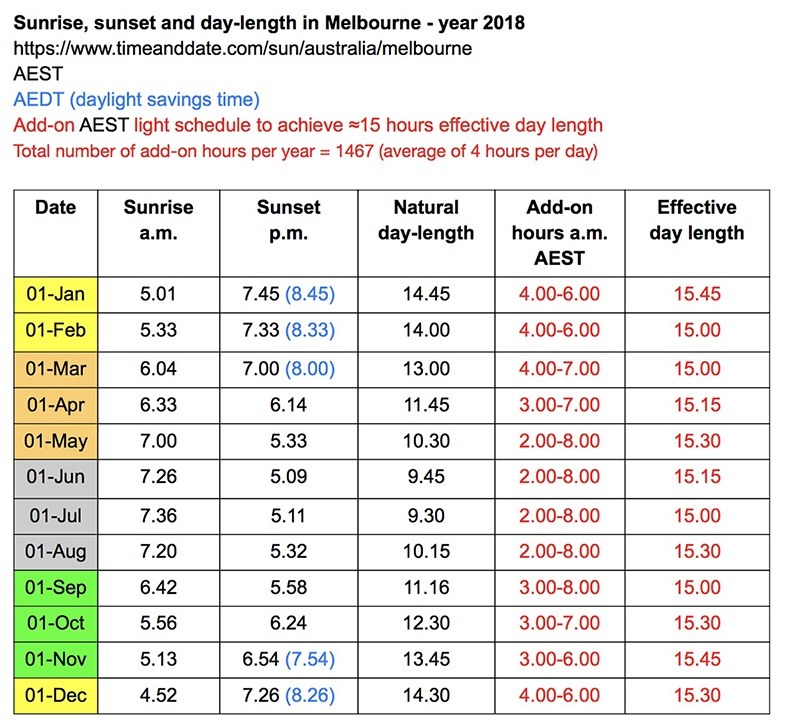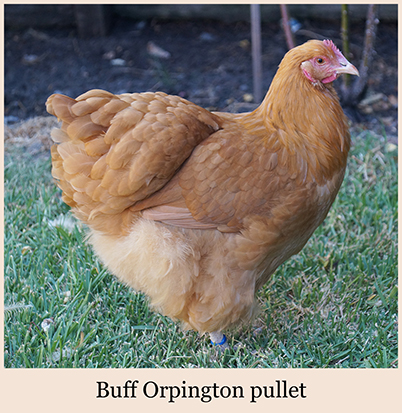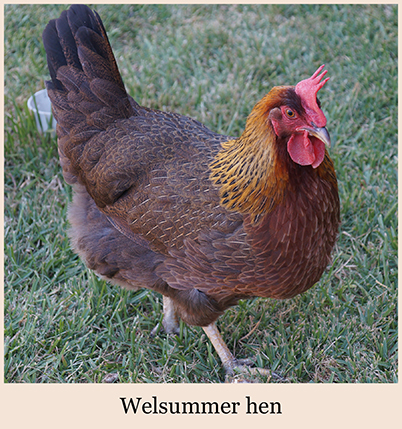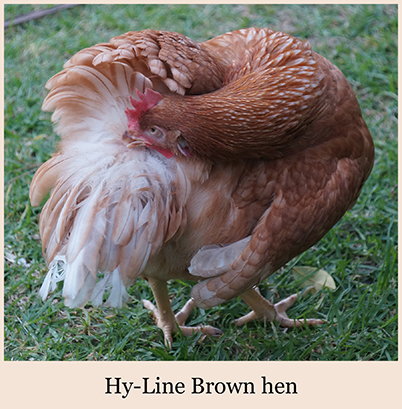
Breeds and the winter pause
You purchased some hatchlings of some particular breed in spring—hatched in-season. They are now more than 22 weeks old so they should be laying right? But they are not, or only sporadically. There is nothing wrong—it’s autumn. An often overlooked aspect of backyard chicken keeping is how day length affects laying. Hens generally need at least 14 hours of daylight to lay well [1,2], but in Melbourne about 14 hours day length is achieved only from Nov-Feb (see table at bottom). So your pullets—now becoming hens, may not start laying until spring, when they are almost a year old.
To get around the winter pause, you can provide your birds with add-on lighting in the morning to achieve 15-16 hours effective day length (see table at bottom). Add-on lighting is a simple and cost-effective way to maximize your egg production. It achieves two things: (1) allows your hens to start laying when they reach 5-6 months of age regardless of season, and (2) promotes peak laying for longer periods of the year so you can reach that 300 eggs per year target. Some think prolonged laying forced by add-on lighting is not good for the hens, but I have yet to see or read good evidence. Laying an egg is a natural bodily function for the hen, and if they are well fed and looking good, then....?
Add-on lighting is applied only in the morning because the hens require a natural sunset to give them time to settle into their roosts. Install a warm-white globe with a colour temperature of 2700-3000K [2]. A 4W LED globe will provide enough light intensity for backyard coops: if you can read at floor level you have enough light [1]. The cost of running this globe under the schedule outlined in the table below is negligible: $1.58 per year at 27 cents per kilowatt hour [3]. The effect of the add-on light assumes the hens are exposed to it—if they leave the coop into an outdoor run where the light is less intense, there may be no effect.
CSBs and the winter pause
Basically there is none. Commercial colour-sexed browns (CSBs), and potentially other hybrids, keep laying regardless of season, at least in Melbourne. You can source these any time of year because the chicks are bred by a small number of large primary hatcheries which operate continuously, e.g. Specialised Breeders Australia, is a primary breeder of Hy-Line and Lohmann Browns at their Rochester hatchery. The hybrid chicks are sold to secondary vendors for use in their own layer farm or for sale. Although CSBs can be bought anytime, it might be best to get them in the longer day-length months (September-February) so they get a solid laying start before winter sets in.
1. Factors affecting egg production in backyard chicken flocks, Jacob et al. (1998) FactSheet PS-35, IFAS Extension, University of Florida, USA.
2. Understanding poultry lighting (2017), Hy-Line Technical Resources.
3. Electricity Bill Calculator, RapidTables.





